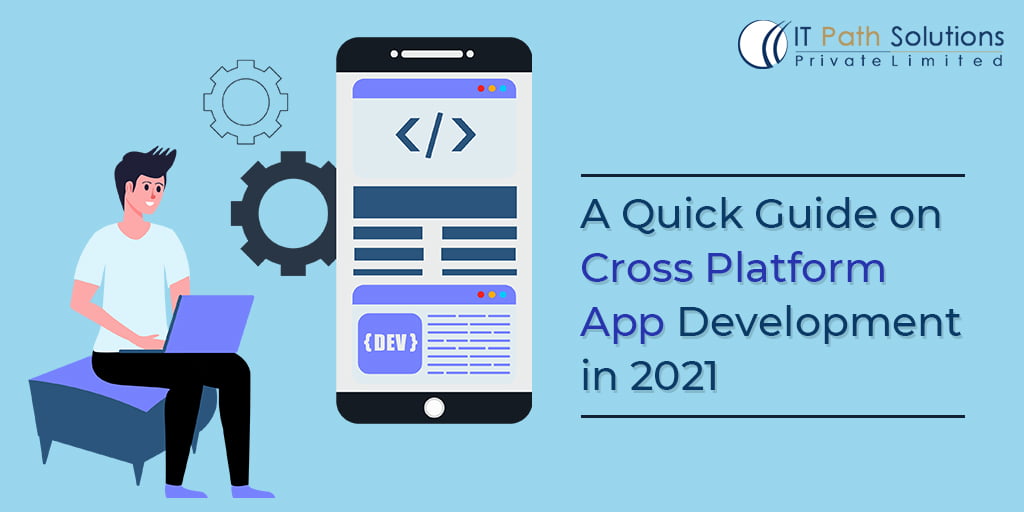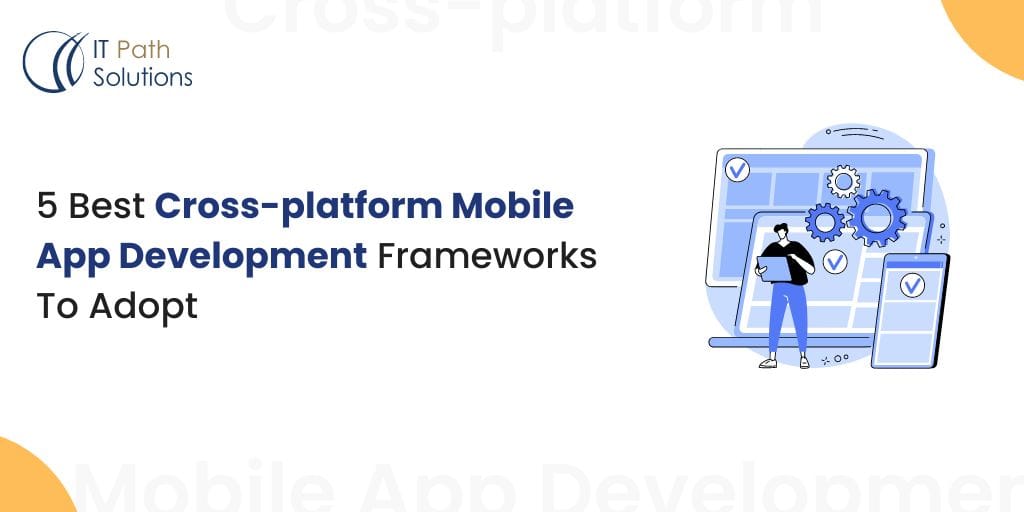A Quick Guide on Cross Platform App Development in 2023
Cross Platform Mobile App Development
With a single codebase or cross-platform app development, developers can create a single code that will work on multiple platforms such as Android and iOS. Cross-platform app development provides single-code base facilities. Using this single code base functionality, developers can deploy mobile apps that can work on any platform. They can avoid creating native apps for each platform.
Cross-platform app development allows developers to deploy apps faster as they can reuse the code and provide a more unified user experience across devices.
What is Cross-Platform App Development?
With cross-platform app development, multiple platforms such as iOS, Android, Windows, etc will run with a single codebase developed in cross-platform technologies such as React Native and Flutter. With cross-platform apps, a single code will run on all the platforms allowing developers to quickly deploy code across devices and reuse the code as and when needed. Updating the app platform also becomes easier as you only have to update one code. Despite the cross functionality the code will offer a near native experience.

The same code can be used for multiple devices
The advantage for the client side is that faster deployment, cost-effectiveness, and faster turnaround time for development are possible with single codebase development. Especially for startups that are keen to launch a beta version, a single codebase allows them to launch a product quickly and deploy it for consumer feedback before they launch a full product.
That is not to say that faster deployment will offer reduced functionalities. With rendering engines and robust server-side capabilities, cross-platform app development technologies can offer an experience that is comparable or even exceeds native app development experience.
Difference Between Native and Cross-Platform App Development
Native apps are platform-dependent and are built using specific languages such as Java for Android and Swift for iOS. With cross-platform languages such as Flutter, they are written in Dart language and run on virtual machines to make the code cross-platform.
Native apps are built with the end device in mind so that they are able to access the device’s hardware and software tools such as camera & microphones better. Because of the OS that was built using the same language, the performance and cross-compatibility are also improved.
But for developing native apps the app entrepreneur needs to develop a different version of the app for each platform. Plus the efforts and time needed to develop different versions also add up to the timeline for the launch. Hence cross platforms apps can be developed, you only need to develop the code once and reuse it across devices.
Cross-platform provides a wide range of tools and technologies that can help to create better cross-platform apps that look near the same as a native app. By and large, you will be able to decide better after a discussion with an expert based on your requirements whether cross-platform app development is suitable for you or not.
Advantage of Cross-Platform App Development
More Audience Reach
With cross-platform app development once, you can target audiences through Android or iOS phones at once. This can save your time and money in targeting more audiences with fewer efforts.
Reduce Expenses
You can develop a single app that will run on all platforms such as iOS, Android, and Windows.
Quicker Output
Using a Cross-platform app development process, we can build extremely fast applications compared to native app development. It can save time and effort for developers.
Quick Prototype
Quick prototyping helps to ensure that the development process is going quickly, and as per the pre-decided flow. It can give an idea of the flow of the correct development process.
Easier Integration
As you only have a single code integrating with plugins and prebuilt components.
Top Cross-Platform Technologies
As per a Stack overflow survey here are the top cross-platform technologies favored by the developers community.

Top Cross development platforms as per stack overflow
Xamarin: With Xamarin developers can create cross-platform applications for Windows, iOS, macOS, and Android. You can also create platform-specific apps with Xamarin’s platform-specific tools.
React Native: React Native can help you build cross-platform apps with its Javascript libraries. Up to 80% of the code can be used across platforms.
Flutter: Flutter was launched by Google in 2017. It is based on Dart, a relatively new programming language. This framework is preferred for MVP development.
Cordova: Cordova uses HTML5, CSS3, and JavaScript for cross-platform app development. Developers can avoid developing apps for each platform by using wrappers made for each platform and use standard API bindings for hardware & OS features access.
Conclusion
Earlier, organizations looking for their mobile app development needs had to go for native development only. With robust cross-platform apps development, they can easily merge non native cross platform code with OS-specific features and functionalities. Opting for cross-platform development or native app development will depend largely on your app-related business plans, your user needs, and the features you want to include in your app.
We can help you get an idea of which native or cross-platform will be the best fit for you. Contact our experts for a no-hassle confidential consultation.
 Healthcare
Healthcare  Education
Education  Real Estate
Real Estate  Logistic
Logistic  Fitness
Fitness  Tourism
Tourism  Travel
Travel  Banking
Banking  Media
Media  E-commerce
E-commerce  Themes
Themes
 Plugins
Plugins
 Patterns
Patterns



